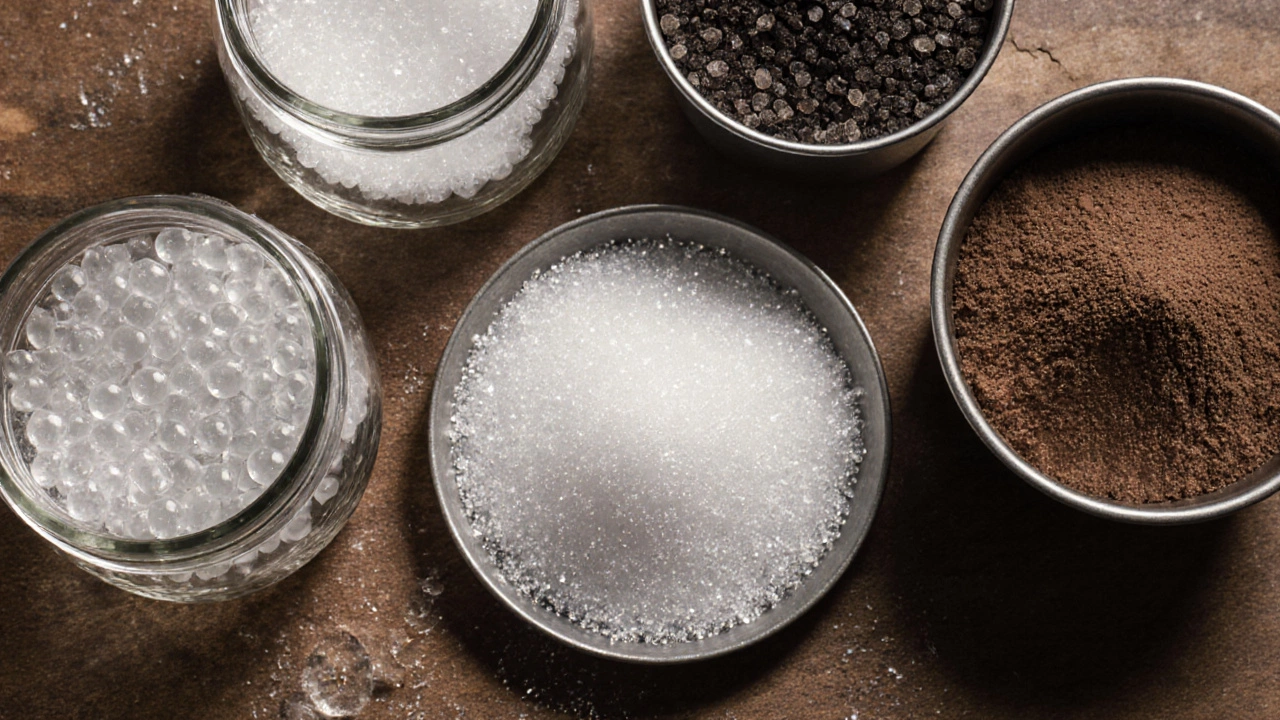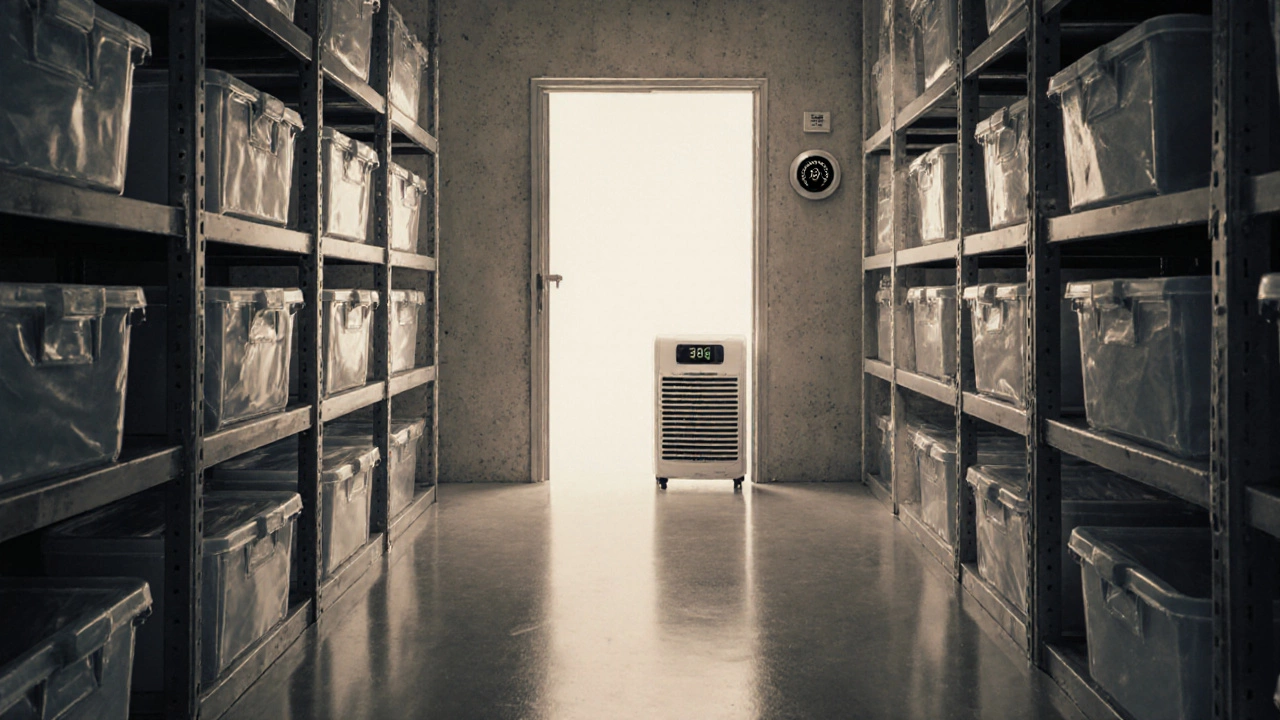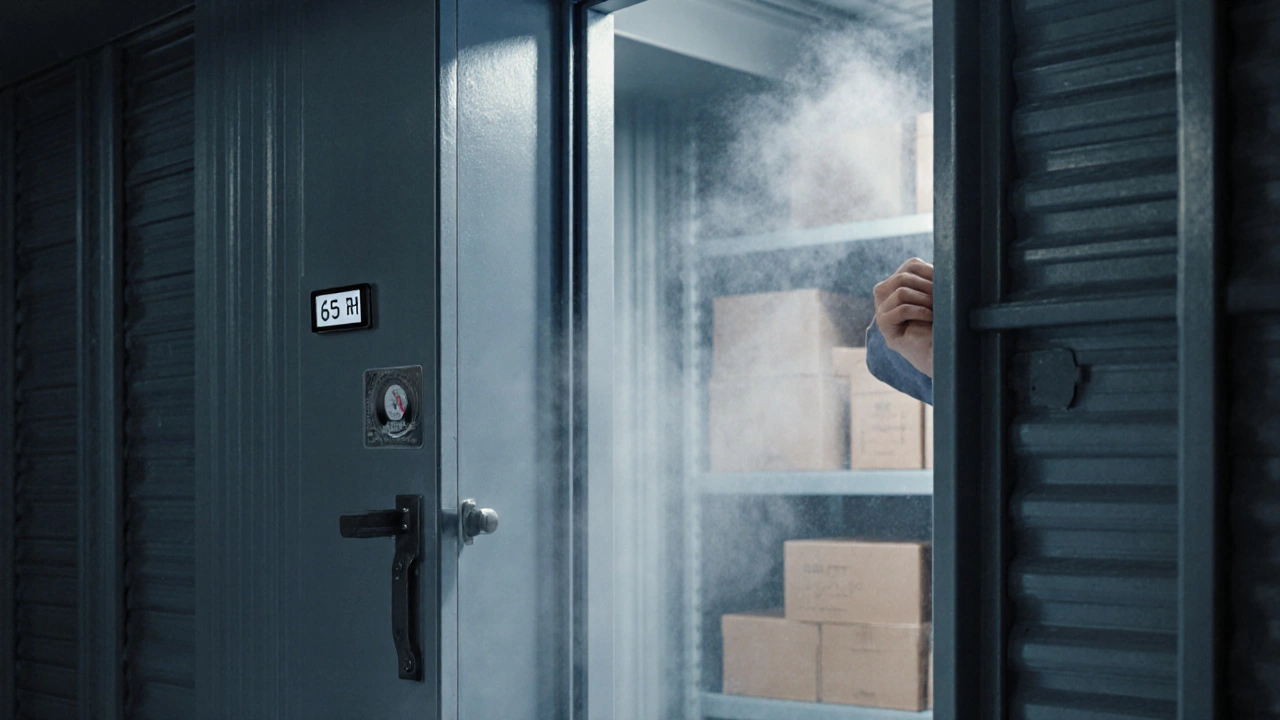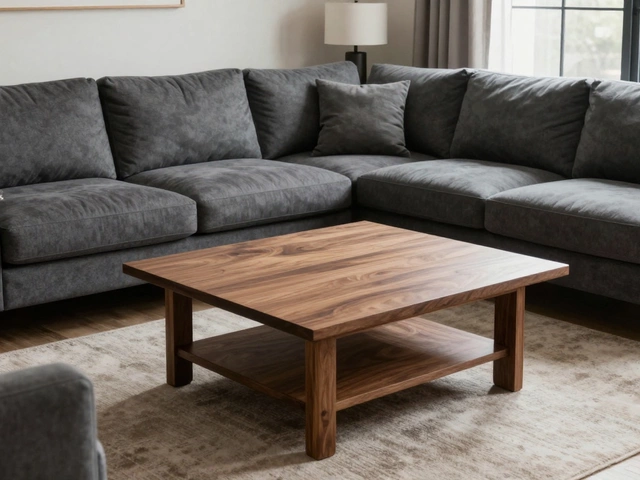Moisture Absorber Calculator
Moisture Absorber Calculator
Absorber Comparison
Silica Gel
Absorption: 30-40 g H₂O/100g
Cost: $2-3 per lb
Calcium Chloride
Absorption: 150-200 g H₂O/100g
Cost: $1-2 per lb
Zeolite
Absorption: 45-55 g H₂O/100g
Cost: $4-5 per lb
Clay
Absorption: 20-30 g H₂O/100g
Cost: $1-1.5 per lb
Key Takeaways
- Silica gel, calcium chloride, zeolite and Montmorillonite clay are the most effective passive absorbers.
- For very humid climates or large units, combine passive absorbers with an electric dehumidifier.
- Measure humidity with a hygrometer and replace or recharge absorbers before they reach saturation.
- Store items in airtight containers whenever possible to reduce the load on absorbers.
- Regularly inspect for mold, musty smells, and water damage to catch problems early.
Ever open a storage unit and get hit by a stale, damp smell? That moisture can ruin documents, electronics, and even furniture. The good news? You don’t need a costly HVAC system to keep things dry. A well‑chosen best moisture absorber does the trick, and it’s cheaper than you think.
In this guide we’ll explain why humidity is a silent enemy, how different absorbers work, and which one fits your situation best. By the end you’ll know exactly what to buy, how to use it, and how to keep your stored belongings safe for years.
Why Moisture Matters in Storage Units
Most storage units are built from metal or concrete walls, but they’re not airtight. Seasonal changes, rain, and even the breath of nearby occupants seep in, raising the relative humidity (RH) inside. When RH stays above 60%:
- Wood swells, causing cracks in furniture and wooden frames.
- Paper and photographs absorb water, leading to warping and mold.
- Metal fasteners rust, weakening structural integrity.
- Electronics suffer corrosion, shortening their lifespan.
All of these issues can turn a clean, organized space into a costly repair job.
How Moisture Absorbers Work
Moisture absorbers are materials that attract water molecules from the air through a process called adsorption or absorption. The difference lies in whether the water stays on the surface (adsorption) or is taken into the material’s internal structure (absorption). Both methods lower the ambient RH, but some materials can handle more moisture before they need replacement.
There are two main categories:
- Passive desiccants - bags, beads, or crystals that sit in the unit and gradually soak up water.
- Active devices - electric dehumidifiers that draw air, condense water, and recycle dry air back into the space.
Passive Desiccants: The Core Options
Below are the four most common passive absorbers. Each entry includes a microdata definition that helps search engines understand the topic.
Silica gel is a synthetic, porous form of silicon dioxide that adsorbs water onto its surface. It’s inexpensive, non‑toxic, and works well in low‑to‑moderate humidity.
Calcium chloride is a highly hygroscopic salt that absorbs moisture through dissolution, turning into a liquid brine. It packs a big capacity but needs proper containment to avoid spills.
Zeolite is a naturally occurring mineral with a cage‑like structure that traps water molecules. It offers good reusability after heating.
Montmorillonite clay is a type of bentonite clay that absorbs water by swelling its layers. It’s cheap and safe for food‑grade applications.

Choosing the Right Absorber for Your Unit
Pick a desiccant based on three practical factors:
- Humidity load - Larger units or those in coastal areas need higher‑capacity materials (calcium chloride shines here).
- Maintenance preference - If you dislike handling liquid brine, silica gel or zeolite are cleaner choices.
- Cost vs. reusability - Zeolite can be regenerated in a home oven, lowering long‑term expense.
Side‑by‑Side Comparison
| Absorber | Absorption Capacity* (g H₂O / 100g) | Typical Cost (USD per lb) | Reusable? | Best For | Typical Lifespan |
|---|---|---|---|---|---|
| Silica gel | 30-40 | 2-3 | Yes (heat to 120°C) | Small to medium units, low‑to‑moderate humidity | 6-12 months per cycle |
| Calcium chloride | 150-200 | 1-2 | No (liquid brine) | Large units, high humidity, coastal areas | 2-4 weeks before replacement |
| Zeolite | 45-55 | 4-5 | Yes (heat to 200°C) | Users who want a reusable option | 12-18 months per cycle |
| Montmorillonite clay | 20-30 | 1-1.5 | No (absorbs and expands) | Food‑grade storage, low‑budget projects | 4-6 weeks before replacement |
*Capacity values are averages from manufacturers and independent lab tests performed in 2024.
How to Use Passive Moisture Absorbers Effectively
- Place a hygrometer in the center of the unit to gauge baseline RH.
- Distribute absorbers evenly on shelving and floor level - avoid stacking them.
- Check the hygrometer every 3‑7 days. When RH hits 55% or the absorber feels damp, replace or recharge.
- For calcium chloride, use a sealed container with a spill‑proof lid to catch the brine.
- Recycle silica gel or zeolite by heating them in an oven (120‑200°C) for 1-2 hours, then let cool before redeploying.

When to Add an Electric Dehumidifier
If you run a climate that regularly exceeds 70% RH, or you have a climate‑controlled climate‑sensitive collection (vintage guitars, archival documents), supplement passive absorbers with an Electric dehumidifier is a plug‑in appliance that pulls in moist air, condenses the water, and releases drier air back into the space. Choose a unit rated for the cubic footage of your storage area and run it for 12‑16 hours per day during humid months.
Additional Tips to Prevent Moisture Buildup
- Hygrometer is a simple handheld device that measures relative humidity should be kept calibrated and placed near the center of the unit.
- Store items in sealed plastic bins or vacuum‑packed bags to create an extra barrier.
- Avoid placing boxes directly against the wall; leave a 1‑inch gap for air circulation.
- Check the unit’s door seal for cracks or wear - replace the gasket if needed.
- Regularly inspect for mold on cardboard, fabrics, or wood; treat early signs with a mixture of water and vinegar.
Frequently Asked Questions
Can I reuse silica gel packs?
Yes. Heat them in a conventional oven at 120°C for about an hour. The beads will turn blue if they contain a moisture indicator, confirming they’re dry enough to use again.
Is calcium chloride safe around food items?
Food‑grade calcium chloride is approved for use in moisture control for produce and meat. Non‑food‑grade versions can be corrosive and should be kept away from consumables.
How often should I replace the absorbers?
Check the hygrometer; when RH climbs above 55% for two consecutive readings, it’s time to swap out or recharge the desiccant.
Do I need a dehumidifier if I already use passive absorbers?
In most temperate climates, well‑placed passive absorbers keep RH in the safe 30‑50% range. In very humid regions or when storing highly sensitive items, pairing them with a small dehumidifier adds extra protection.
What’s the best way to monitor humidity over time?
A digital hygrometer with a memory log lets you track daily changes. Some models sync with smartphone apps for remote alerts when RH exceeds a set threshold.
With the right absorber and a few simple habits, your storage unit can stay dry, odor‑free, and ready for whatever you stash inside. Pick the material that matches your budget, reusability preference, and humidity level - and enjoy peace of mind knowing your belongings are protected.





